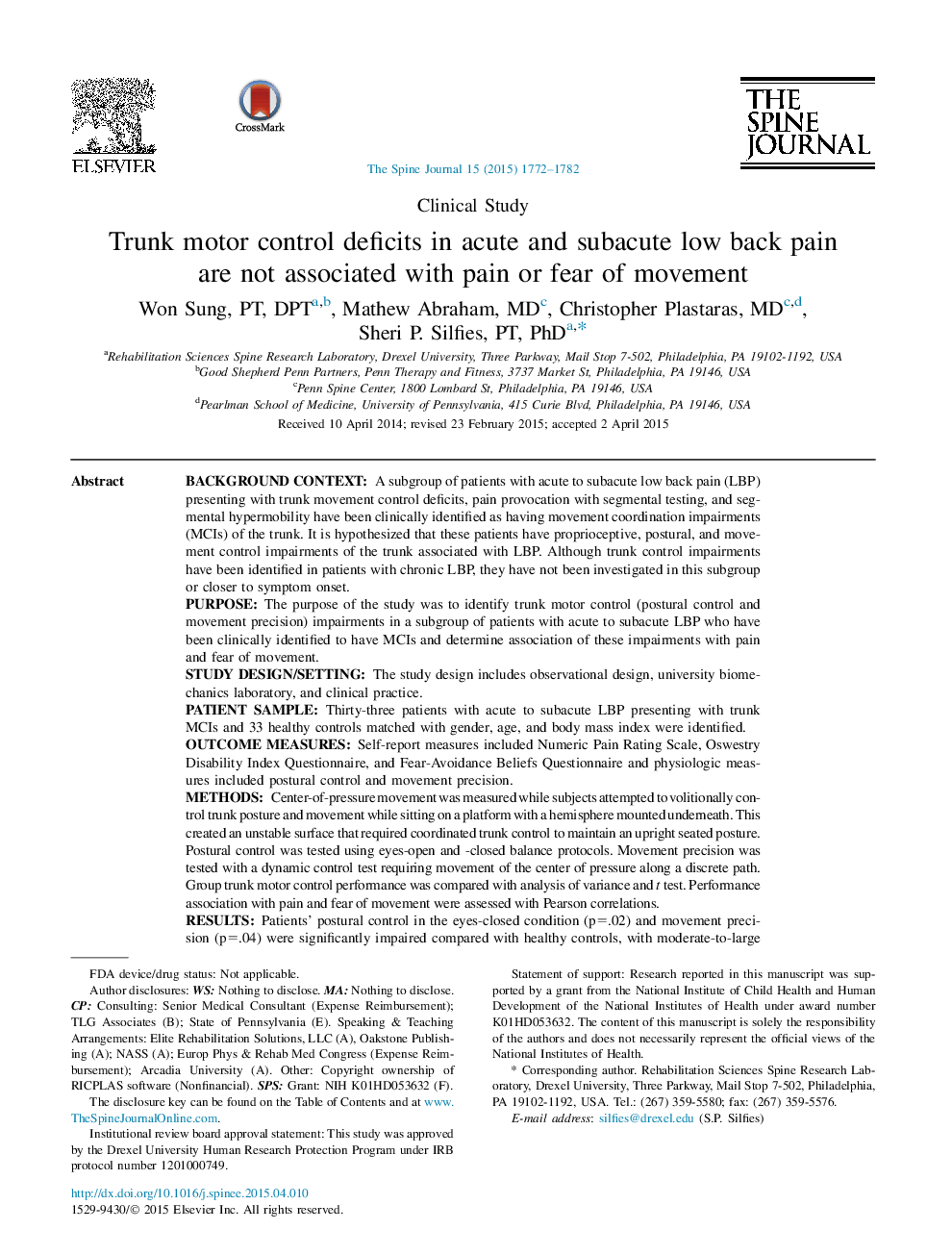| کد مقاله | کد نشریه | سال انتشار | مقاله انگلیسی | نسخه تمام متن |
|---|---|---|---|---|
| 6212458 | 1268580 | 2015 | 11 صفحه PDF | دانلود رایگان |
Background contextA subgroup of patients with acute to subacute low back pain (LBP) presenting with trunk movement control deficits, pain provocation with segmental testing, and segmental hypermobility have been clinically identified as having movement coordination impairments (MCIs) of the trunk. It is hypothesized that these patients have proprioceptive, postural, and movement control impairments of the trunk associated with LBP. Although trunk control impairments have been identified in patients with chronic LBP, they have not been investigated in this subgroup or closer to symptom onset.PurposeThe purpose of the study was to identify trunk motor control (postural control and movement precision) impairments in a subgroup of patients with acute to subacute LBP who have been clinically identified to have MCIs and determine association of these impairments with pain and fear of movement.Study design/settingThe study design includes observational design, university biomechanics laboratory, and clinical practice.Patient sampleThirty-three patients with acute to subacute LBP presenting with trunk MCIs and 33 healthy controls matched with gender, age, and body mass index were identified.Outcome measuresSelf-report measures included Numeric Pain Rating Scale, Oswestry Disability Index Questionnaire, and Fear-Avoidance Beliefs Questionnaire and physiologic measures included postural control and movement precision.MethodsCenter-of-pressure movement was measured while subjects attempted to volitionally control trunk posture and movement while sitting on a platform with a hemisphere mounted underneath. This created an unstable surface that required coordinated trunk control to maintain an upright seated posture. Postural control was tested using eyes-open and -closed balance protocols. Movement precision was tested with a dynamic control test requiring movement of the center of pressure along a discrete path. Group trunk motor control performance was compared with analysis of variance and t test. Performance association with pain and fear of movement were assessed with Pearson correlations.ResultsPatients' postural control in the eyes-closed condition (p=.02) and movement precision (p=.04) were significantly impaired compared with healthy controls, with moderate-to-large group difference effect sizes. These trunk motor control impairments were not significantly associated with the patients self-reported pain characteristics and fear of movement.ConclusionsPatients with clinical identification of trunk MCIs demonstrated decreased trunk motor control, suggesting that impairments in proprioception, motor output, or central processing occur early in the back pain episode. This information may help to guide interventions to address these specific limitations, improving delivery of care.
Journal: The Spine Journal - Volume 15, Issue 8, 1 August 2015, Pages 1772-1782
